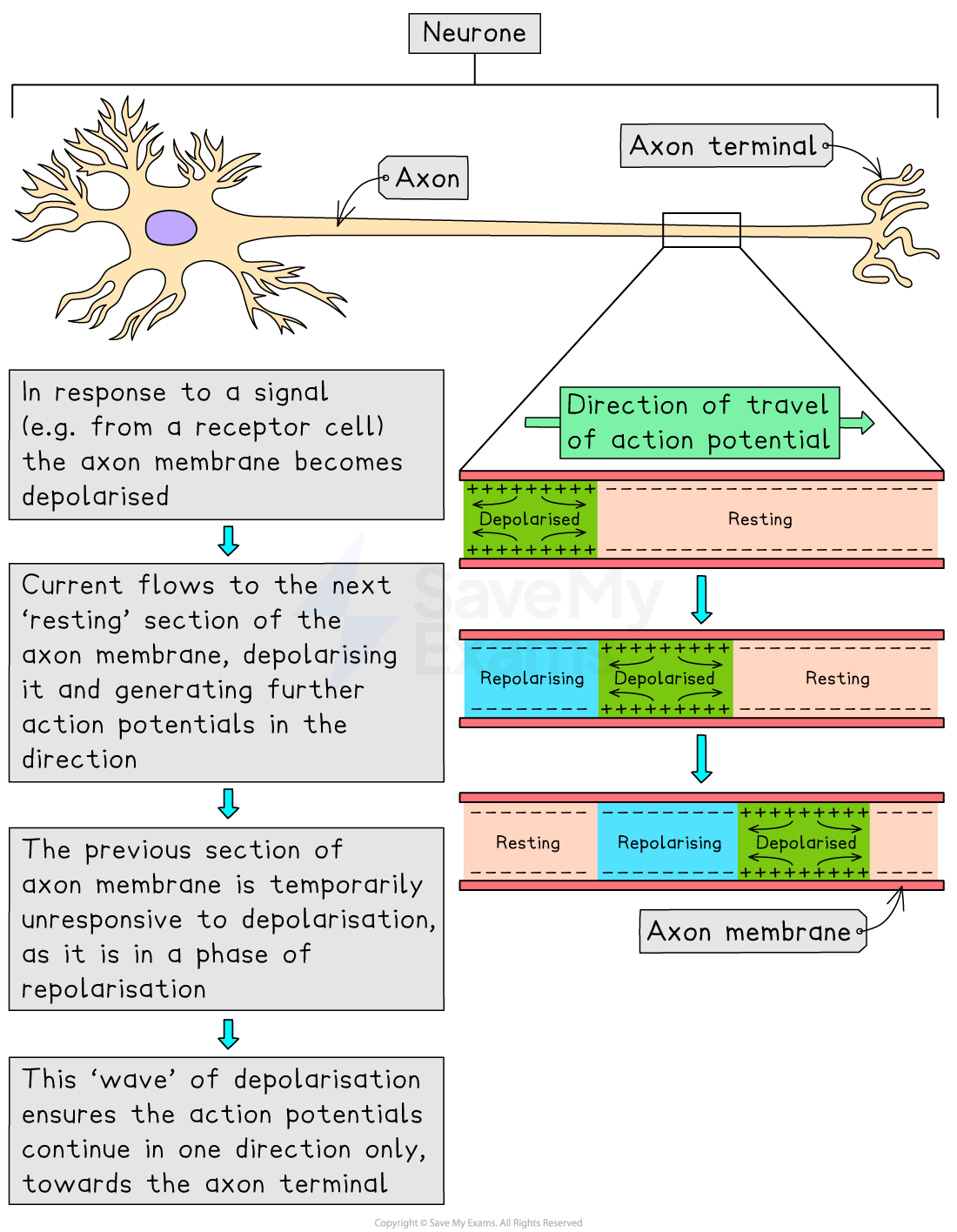Nerve Impulse Transmission (AQA A Level Biology): Revision Note
Exam code: 7402
Nerve impulse transmission
Action potentials occur at the point of stimulation, and can then be transmitted along the length of an axon as nerve impulses
Non-myelinated neurones
Transmission of a nerve impulse in a non-myelinated neurone is as follows:
the initial influx of sodium ions causes an increase in sodium ion concentration inside the axon
sodium ions diffuse along the axon, depolarising the membrane in the next section of the axon
voltage-gated sodium ion channels open in the new section of the axon and there is a new influx of sodium ions
As with the initial generation of an action potential, the voltage-gated sodium ion channels only open if the membrane depolarisation reaches the threshold potential; otherwise the initial action potential may not be transmitted any further
The nerve impulse does not travel backwards due to the membrane behind the action potential being in a hyperpolarised state

Myelinated neurones
Some neurones are surrounded by a fatty layer known as the myelin sheath
The myelin sheath is formed from Schwann cells
The regions of the axon in between each Schwann cell are known as the nodes of Ranvier
The transmission of nerve impulses along myelinated axons occurs as follows:
the initial influx of sodium ions causes an increase in sodium ion concentration inside the axon
sodium ions diffuse along the axon
in sections of the axon that are surrounded by myelin, depolarisation cannot occur
The myelin sheath stops the diffusion of sodium ions and potassium ions
sodium ions diffuse along the length of each Schwann cell, from one node or Ranvier to the next in order to initiate an action potential at each node
This diffusion of charged particles sets up local currents, or local circuits
Action potentials appear to jump from one node to the next, this is known as saltatory conduction
Saltatory conduction allows the impulse to travel much faster than in an unmyelinated axon of the same diameter


Examiner Tips and Tricks
When describing transmission in a myelinated neurone, be sure to use language carefully:
Action potentials appear to jump between nodes of Ranvier, not between "neurones"
Don't just say that an action potential jumps, but explain what is meant by this, i.e. that action potentials occur only at the nodes of Ranvier, so the impulse appears to jump between them during saltatory conduction

Unlock more, it's free!
Did this page help you?